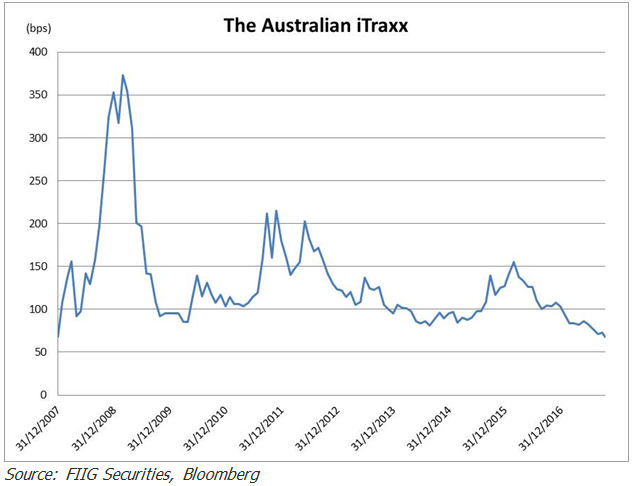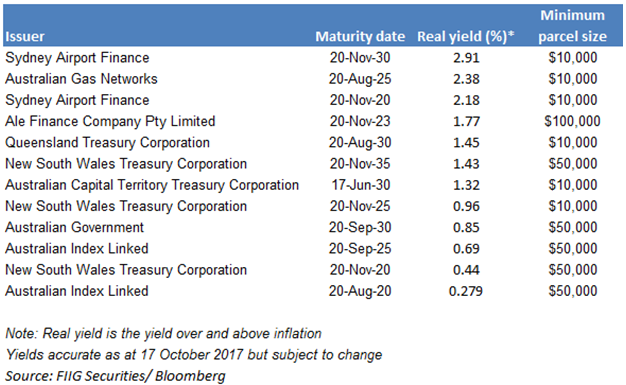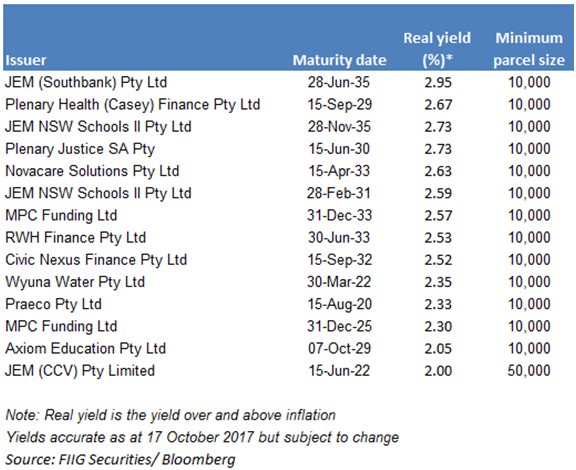It’s getting harder and harder to find value in a very tight market. The Australian Itraxx is trading around 68 basis points – that’s a proxy for the average spread over the benchmark for an investment grade bond. It’s not much.

Some longer dated lower investment grade bonds are trading with a ‘3’ handle, and with risks more to the downside at this point in the cycle seem expensive. Especially if interest rates do rise as prices would decline.
One of the last bastions of value in the market is inflation linked bonds. While its true inflation has gone on a sabbatical and we’re unsure when it’ll return, when it does, purchasing power will decline without inflation protection.
With many inflation linked bonds having strong ‘A range’ credit ratings, the return given the risk, coupled with the unique protection the bonds offer, mean increasing your allocation to ILBs is worth considering on a relative value basis.
There are two types of inflation linked bonds:
- Capital indexed bonds
- Indexed annuity bonds
Capital Indexed Bonds (CIBs)
Capital Indexed Bonds generally pay a relatively low interest on a principal that grows with inflation. Interest is paid based on the indexed value of the principal, and at maturity the final indexed value of the principal is repaid to the investor. The effect of this is twofold:
- Interest increases each quarter by the rate of inflation, but is generally lower than other fixed income investments.
- The value of the principal increases each quarter by the rate of inflation, returning a greater amount of cash upon maturity or sale of the bond.
CIBs generally suit investors who are seeking maximum inflation protection for their capital and are particularly attractive if you can purchase the bond at a discount to its indexed face value, which has often been possible during periods of low inflation.
Below is a list of CIB DirectBonds that we make available from $10,000. The list runs from highest real yield down to lowest real yield.

Indexed Annuity Bonds (IABs)
Indexed Annuity Bonds have a predetermined paydown schedule, much like a mortgage, but with an additional factor in that each quarterly payment increases by the rate of inflation. The effect is to provide access a cashflow which accretes by inflation.
IABs generally suit investors who are seeking greater cashflows accept they will not receive principal at maturity.
Shorter maturity IAB cashflows can often look attractive but are not always easy to source.
Some investors in these bonds do not want principal being returned to them, rather they judge the risk / return to be attractive as many of the bonds are of a very high credit quality.
Below is a list of IAB DirectBonds that we make available from $10,000. The list runs from highest real yield down to lowest real yield.









